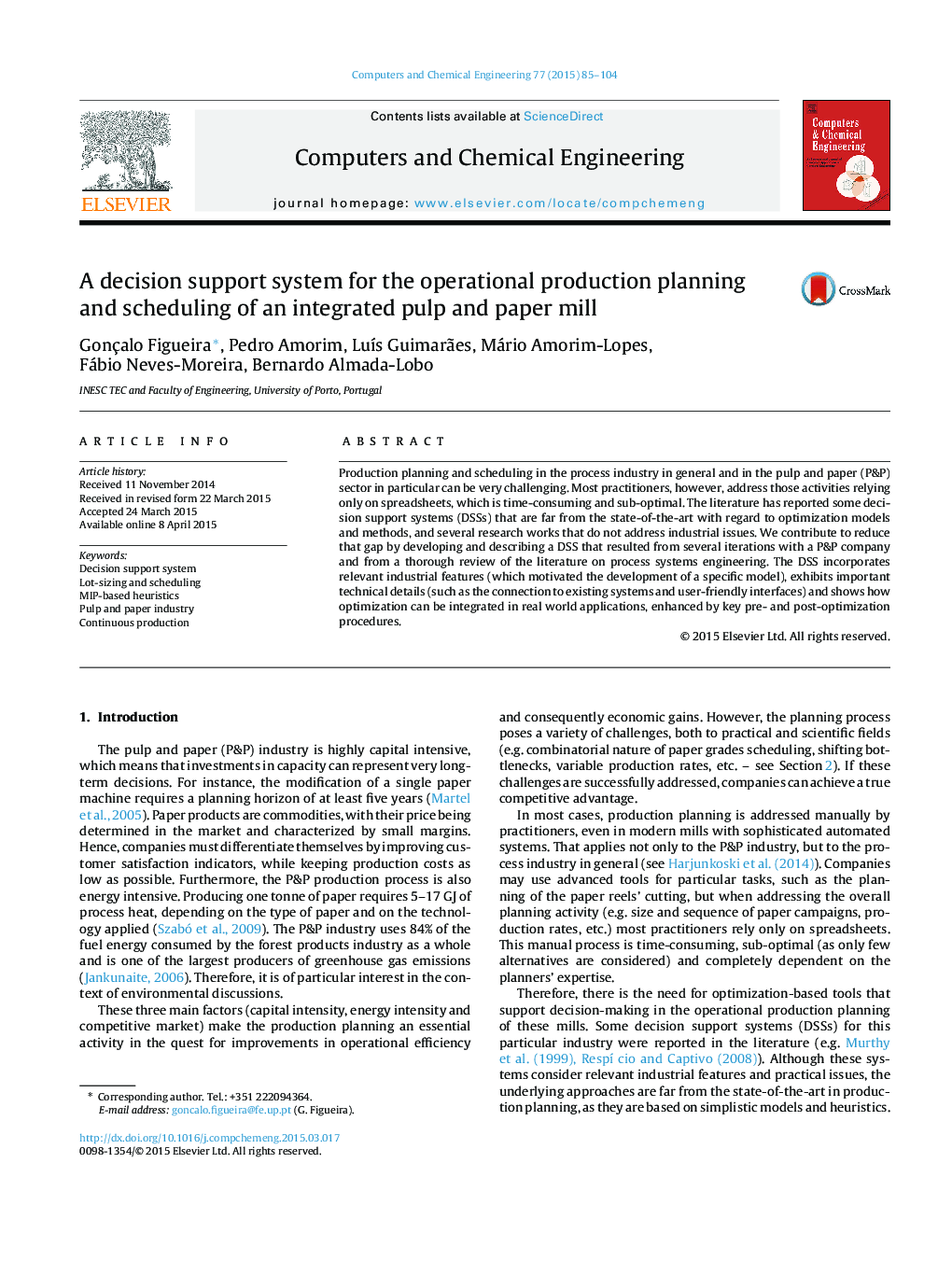| کد مقاله | کد نشریه | سال انتشار | مقاله انگلیسی | نسخه تمام متن |
|---|---|---|---|---|
| 172322 | 458532 | 2015 | 20 صفحه PDF | دانلود رایگان |
• Discussion on desirable characteristics of analytical models and methods.
• Identification of relevant industrial features and how they should be included in the solution approach.
• Extension of models of the literature, considering practical constraints and objectives.
• Important data processing in both pre- and post-optimization phases.
• Exhibition of connections to existing systems and of user-friendly interfaces.
Production planning and scheduling in the process industry in general and in the pulp and paper (P&P) sector in particular can be very challenging. Most practitioners, however, address those activities relying only on spreadsheets, which is time-consuming and sub-optimal. The literature has reported some decision support systems (DSSs) that are far from the state-of-the-art with regard to optimization models and methods, and several research works that do not address industrial issues. We contribute to reduce that gap by developing and describing a DSS that resulted from several iterations with a P&P company and from a thorough review of the literature on process systems engineering. The DSS incorporates relevant industrial features (which motivated the development of a specific model), exhibits important technical details (such as the connection to existing systems and user-friendly interfaces) and shows how optimization can be integrated in real world applications, enhanced by key pre- and post-optimization procedures.
Journal: Computers & Chemical Engineering - Volume 77, 9 June 2015, Pages 85–104
